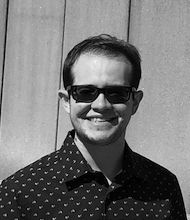The increasing ubiquity of 'pink-slime' journalism
The issue is becoming more concerning as the US election draws closer


As the 2024 U.S. election draws closer, a dark facet of the media world has some in the industry on edge: a particular type of fake news website that is designed to appear legitimate. The ubiquity of these sites has led to a rise in what those in the news business call "pink-slime" journalism.
The problem is becoming more pervasive as it becomes harder to discern real news stories from phony ones. While not solely focused on politics, these fake news websites, which are seen on both sides of the political aisle, will likely continue to play a looming role in the election and beyond. What is pink-slime journalism, and why is it making reporters so nervous?
What is pink-slime journalism?
Named after a meat byproduct, pink-slime journalism describes "outlets that publish poor quality reports that appear to be local news," said the Poynter Institute. In other words, they are fake news websites posing as legitimate sources of local news. The rise of pink-slime journalism can be almost directly tied to the demise of local newspapers in recent years.
The Week
Escape your echo chamber. Get the facts behind the news, plus analysis from multiple perspectives.

Sign up for The Week's Free Newsletters
From our morning news briefing to a weekly Good News Newsletter, get the best of The Week delivered directly to your inbox.
From our morning news briefing to a weekly Good News Newsletter, get the best of The Week delivered directly to your inbox.
Many of these low-profile local publications, especially in small towns, have "either gone out of business or are struggling to survive," and pink-slime websites have cropped up in their place, said the Poynter Institute. They often slide under the radar by claiming to "cover local and hyperlocal news, sometimes taking advantage of news deserts." And unlike actual newspapers, pink-slime journalism is mostly "produced via automation and templates."
How many of these websites are there?
The exact amount is unclear, but they have been on a steady rise ahead of the election, and do not appear to be going away. There are at least 1,265 identifiable websites that claim to be independent news outlets but are really pink-slime publications, according to a recent report from the misinformation watchdog group NewsGuard.
In comparison, there are only 1,213 daily local newspapers left in the United States, according to Northwestern University's Local News Initiative. The fact that there are now more pink-slime publications than genuine local publications in the U.S. has shined a spotlight on the omnipresence of misinformation in the media landscape.
Who is behind these websites?
Within the identified pink-slime websites in NewsGuard's report, there are "eight primary organizations that have been identified as supporting most of the sites identified — four lean conservative and four lean progressive," said Axios. The majority of the sites were created at the behest of the conservative network Metric Media. Most of Metric Media's sites "don't include much information about the sites' funders or management," and typically "lack bylines and many are outdated or marked as 'press release submissions.'"
A free daily email with the biggest news stories of the day – and the best features from TheWeek.com
Other organizations identified by Axios as allegedly backing pink-slime websites are Courier Newsroom and States Newsroom. Both reportedly receive donations from left-wing backers, though these groups are "much more explicit about their funding and motives," said Axios; Courier Newsroom "aims to tackle disinformation by funding local newsrooms with a progressive perspective," while States Newsroom was "incubated originally via a left-leaning nonprofit called The Hopewell Fund."
Some pink-slime outlets are almost immediately identifiable as fake. One website called Chicago City Wire recently ran an article on an "upcoming local event about decriminalizing sex work under the salacious headline 'Hookers and chicken parm,'" said Ars Technica. This article "has no named byline and does not mention chicken parm apart from in its headline." Instead, it "taps into ongoing American culture wars, labeling a local LGBTQ+ organization as a 'pro-homosexual and cross-dresser rights group.'"
Beyond American borders, Russian disinformation is reportedly playing a role in the rise of pink-slime as well. A separate report from NewsGuard found that a Florida man was fronting a network of at least 167 Russian disinformation websites being disseminated across the web.
And while the majority of pink-slime is found online, print journalism is not entirely immune; physical newspapers are allegedly often used to target voters in several states. This past April, the Illinois State Board of Elections asked the state's attorney general to investigate a pink-slime publication used by the same conservative backer of Metric Media in 2022. The "DuPage Policy Journal" was disseminated across northern Illinois and designed to look like a real newspaper, but was actually part of a far-right GOP campaign, the Chicago Tribune reported.
"It is disappointing when an organization shows such little regard for voters," said Bernadette Matthews, the Illinois board's executive director, per the Tribune.
Justin Klawans has worked as a staff writer at The Week since 2022. He began his career covering local news before joining Newsweek as a breaking news reporter, where he wrote about politics, national and global affairs, business, crime, sports, film, television and other news. Justin has also freelanced for outlets including Collider and United Press International.
-
 Why are micro-resolutions more likely to stick?
Why are micro-resolutions more likely to stick?In the Spotlight These smaller, achievable goals could be the key to building lasting habits
-
 What will happen in 2026? Predictions and events
What will happen in 2026? Predictions and eventsIn Depth The new year could bring peace in Ukraine or war in Venezuela, as Donald Trump prepares to host a highly politicised World Cup and Nasa returns to the Moon
-
 Why is Trump’s alleged strike on Venezuela shrouded in so much secrecy?
Why is Trump’s alleged strike on Venezuela shrouded in so much secrecy?TODAY'S BIG QUESTION Trump’s comments have raised more questions than answers about what his administration is doing in the Southern Hemisphere
-
 Paramount fights Netflix for Warner as Trump hovers
Paramount fights Netflix for Warner as Trump hoversSpeed Read Paramount Skydance is seeking to undo Netflix’s purchase of Warner Bros. Discovery
-
 Rothermere’s Telegraph takeover: ‘a right-leaning media powerhouse’
Rothermere’s Telegraph takeover: ‘a right-leaning media powerhouse’Talking Point Deal gives Daily Mail and General Trust more than 50% of circulation in the UK newspaper market
-
 Paramount, Comcast, Netflix bid for WBD
Paramount, Comcast, Netflix bid for WBDSpeed Read The outcome of this bidding war ‘could alter the trajectory of the entertainment business’
-
 How Bari Weiss could change CBS News
How Bari Weiss could change CBS NewsTalking Points Is the network trying to ‘appease’ the president?
-
 Bill Moyers: the journalist who was the face of PBS
Bill Moyers: the journalist who was the face of PBSFeature A legend in public broadcasting
-
 What's Tucker Carlson's net worth?
What's Tucker Carlson's net worth?The Explainer The far-right media figure has made millions since his embrace of Trumpism
-
 Elon Musk and Wikipedia are feuding
Elon Musk and Wikipedia are feudingThe Explainer The online encyclopedia stands accused of being far-left propaganda
-
 Can The Washington Post save itself?
Can The Washington Post save itself?Today's Big Question Staffers plead with Jeff Bezos amidst a talent exodus
